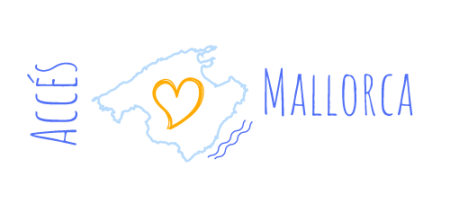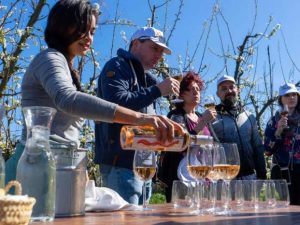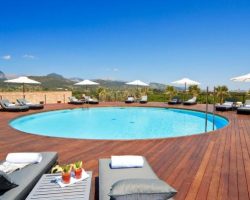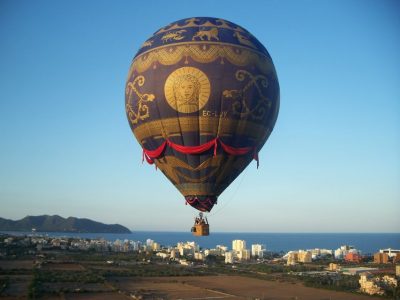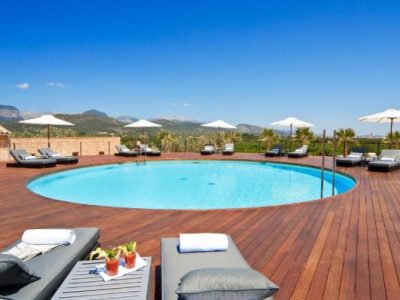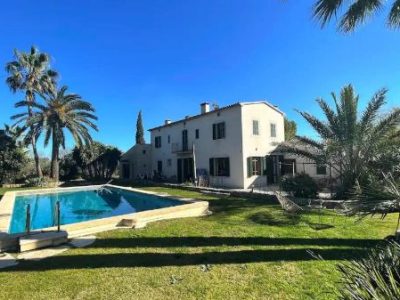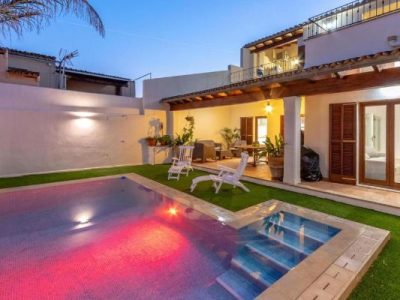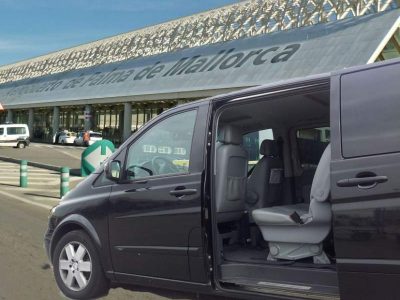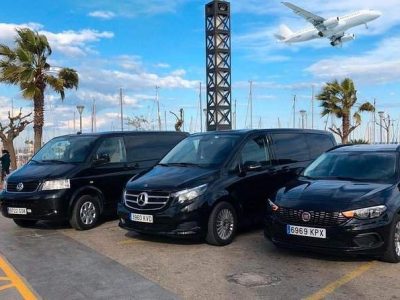Consell, Mallorca, Things to do and see, hotels, market
Consell is nicely located at the foot of the Sierra de Tramuntana mountains and although we are only about 20 km north of the capital of Palma, Consell is a very quiet and traditional town. Over the years Consell has certainly not lost its Mallorcan charm, the slow pace or the pride that is part of the area’s history.
- This is where I want to go!
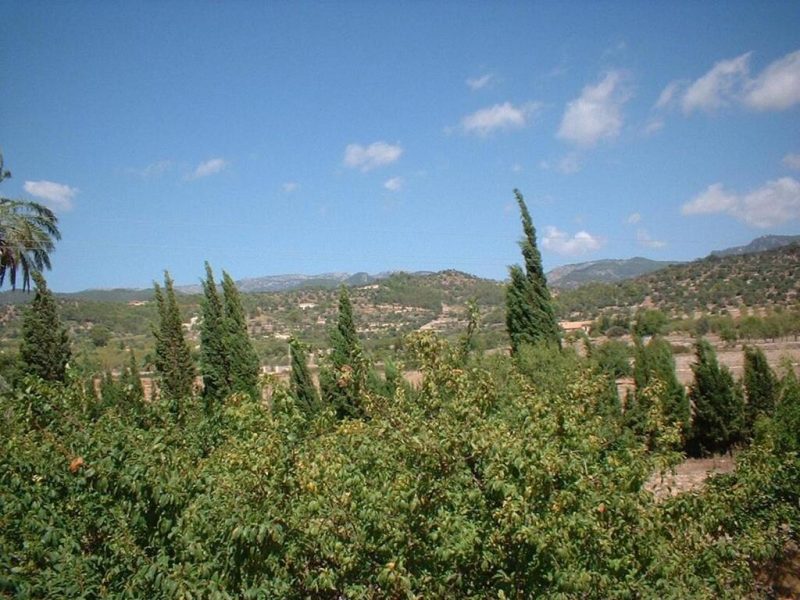
Why visit Consell
Things to do in Consell
VISIT THE PAROCHIAL CHURCH OF OUR LADY OF VISITATION
The most remarkable buildings found in Consell, is the church standing at Placa Major. The church features an interesting combination of architectural stylistics, both on the exterior and in the interior. Some of the highlights of the church includes the stained glasses of Modernist style, the Neoclassical and the Baroque altarpieces and the use of many different materials in the pillars, walls, arches and vaults due to poverty.
VISIT A LOCAL WINERY
Consell has rich traditions of wine production, just like the neighboring municipality of Binissalem. One of the oldest wineries in Mallorca, is the Bodegas Ribas situated in a charming rustic finca in Consell that you can visit almost every day (appointment needed). The Ribas family has been producing wine for more than 300 years and has 40 hectares of vineyards where they cultivate local grape varieties such as Mantonegro, Gargollasa and Prensal. A visit to the winery makes for an excellent tour in Consell, you will learn about techniques, about the history of the island, the experimentation with tastes and much more relating to local wine production, it is one of the best things to do in Consell.
DISCOVER THE MANY IMPOSING MANSIONS OF BINISSALEM
Binissalem used to be a very prosperous area, namely because of the long traditions of wine production. Up until the late 1800’s, Binissalem was one of the wealthiest areas in Mallorca, and it shows in the many incredible mansions found in the narrow streets of the town. Stroll the streets to discover numerous examples of unique civil architecture with baroque influence.
VISIT ONE OF THE WINERIES
Being the biggest wine district in Mallorca, Binissalem is home to several wineries that you can visit during your stay. The biggest and most renown winery, is the Jose Ferrer winery situated just outside the town. But there are several other interesting wineries to visit in Binissalem such as the Tianna Negre, one of the most innovative wineries in Mallorca with focus on sustainability and climate. Visiting a winery is one of the top things to do in Binissalem all year round.
THE TRENCAT BRIDGE
Are you in Consell on a clear day, as most fortunately are, you have the opportunity to feel the fresh country air in the area. The climate in Consell is by far most of the year quite mild and, the Tramuntana mountain range protects the area from cold winds. Therefore, a pleasant walk between the many farms and plantations may be just the thing for you. With the green mountains in the backdrop to one side and the countryside to the other, you have a beautiful and colorful ride ahead of you. Just outside the town you will find the old Trencat bridge, built in the Middle Ages of sandstone from the area and now separating Consell and Alaró.
There are also several notable buildings in the city itself, among others. the city hall which has a long history and for those interested in architecture, this is a plus.
MASNOU ESTATE
The old Moorish farm is the largest in the whole municipality and during the Moorish period, this was called ‘Jarfa’s farm’. Not only is the farm the largest in the municipality, but the whole place is also the most important archaeological remains. By visiting here, you get a really good idea of what life in Mallorca looked like more than 1000 years ago.
THE GUILLEM CAMPINS FORGE
In 1890, when horse-drawn carriages were still the main means of transportation in the industrial districts, the Campins brothers started a small smithy in the center of town. Although today there are not many horseshoes to be changed on a daily basis, the small smithy still works in the best condition. The smithy is known throughout the island for its knives, and people know that when they need a special knife, they go to Consell for the best quality. The knives are hammered and shaped on exactly the same anvil as when the store opened. Maybe also a fun souvenir to bring home.
FAQ
Here are the best accommodation options in Consell:
- Sa Cabana Hotel & Spa
- Villa Son Jordi Nou
- Villa Pintor
Consell is located approximately 24 km (~15 miles) from Palma airport. The transfer time by car or taxi is about 20 minutes.
A taxi from the airport will cost about 30 euros.
If you prefer a more comfortable transfer, consider an air-conditioned private minibus. Book here
There are actually two weekly markets in Consell; on Thursdays and Sundays. The latter is a huge flea market and quite fun to attend.
Market and Events in Consell
Weekly Market in Binissalem
Every Thursday the market is held in Consell where the streets are covered with stalls and stands. The market in Consell is of a more traditional format, where food, some clothes, shoes and crafts are for sale. But here are plenty of Mallorcan delicacies and typical products to taste.
Already again on Sunday, there is another market in Consell; Mallorca’s probably largest flea market. Residents from near and far on the island flock to the city, either to see if they can do a scoop, or just to enjoy the almost euphoric market atmosphere created on Plaça Mayor. Over the years, the flea market has grown so popular on the island that it has been necessary to put traffic lights up on the street so that pedestrians can cross. It is otherwise very atypical for a village in Mallorca to have traffic lights in the streets.
Events and festivities in Binissalem
January
Sant Antoni
As in so many other villages in Mallorca, Consell celebrates Sant Antoni (Antonius the Holy) on January 16 and 17. On the evening of the 16th, the small town is lit up with bonfires, communal dining and traditional folk dances. On the 17th there is a special service in the morning.
August
Festes de Sant Barlomeu
Consell celebrates its patron saint, Bartholomew, on August 24 each year with a city party. The party starts approx. two weeks before, where a packed program of fun and cultural features and activities turns the village on the other end.
Some of the typical events for the town party are exhibitions, outdoor dining in the streets, theatrical performances, concerts, competitions, games, sports tournaments, fireworks shows and market.
There is always activity in the small town during these two weeks.
October
Fira de Tardor (autumn fair)
Fira de Tardor is held on the first Sunday after Luke’s day (October 18). The autumn fair usually offers a lot of delights, such as market, music performances, parades, exhibitions, workshops and special activities for children.
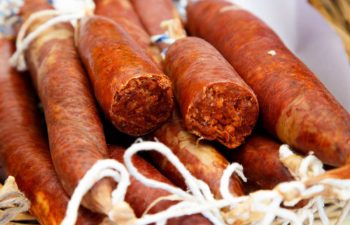
Support Local
Supporting local communities during your travels can have a profound impact. Stock up with groceries locally, stop in an artisan shop or enjoy a refreshment at a restaurant or bar. Now more than ever, these small businesses need support from travelers near and far.
Get to know the area of Consell
History of Consell
The first vestiges of human occupation in the area dates back to the talayotic culture, from where five sites has been found; 2 in the property of Masnou and the rest in the properties of Son Braó, Son Pontiró and es Velar. The founds done in Masnou are the only ones that tells of a prehistoric village, the rest are artifacts such as ceramics and tools.
In 123 BC, general Quintus Caecilius Metellu conquers Mallorca after more than a century fighting in the Punic Wars, and makes Mallorca part of the Roman empire. The Romans established two cities, Palmera and Pol-lentia, each placed in strategic positions respectively in the southern and northern end of the island. The Romans connected the two cities with what is now known as either the Roman road or the Royal road, the latter name occurred after king Jaume II of Mallorca re-established this road in the year 1300. Consell is believed to have been one of the camp sites on the Roman road, a place for soldiers and caravans to rest.
Very limited information about the area during the Islamic era is available, however, we know of a farmhouse here that belonged under the Juz d’Quanarusha (Juz was a Muslim title of a count or someone with jurisdiction of an area). Beside from Consell, Quanarusha included the areas of Alaró, Binissalem, Costitx, Lloseta, Santa Maria, Santa Eugenia and Sencelles.
According to etymologists, the district of Quanarusha was occupied by the Berber tribe of Zanata. Also, they suggest that the name of Quanarusha derives from the Arab “qanat al-‘arusa”, which roughly translates to something like “Mine source of Banu Arus”. In the Book of Distribution from 1232 stating which areas belongs to who after the Catalan conquest, Consell is written as Conxel with an extension of 113,64 ha. In this book the farmhouse of Jarfa is mentioned, which corresponds to the Masnou property.
The Masnou property possess some interesting elements from the Muslim era, such as well, lavoir and qanat.
Following the Catalan conquest of Mallorca (1229 – 1232), king Jaume I distributed the territory of the island amongst participants of the campaign. The area of Quanarusha, in Catalan known as Canarossa, was given to the viscount of Bearn, Guillem de Montcada. However, Montcada died soon after the conquest and the district fell into the hands of his widow, Garsenda and his son, Gastó.
In the first half of the 14th century the small community started to see a nucleus of houses, as the king offered property and slaves to settlers from the mainland for very reasonable prices. However, already in 1348 the small community was almost erased completely due to the black plague.
After a few centuries of growth, the 17th century was characterized by economic shortages due to aggravation of agricultural and horticultural cultivation. In 1652, Consell is meant to have suffered the most losses in Mallorca caused by the bubonic plague. Not until the 18th century, Consell started to grow in population again.
During the 19th century, Consell sees an increase in demographics as the agricultural productions grows and wine making starts to be good business. The socioeconomic transformation of this period allowed for the urban nucleus to develop and expand considerably, and in 1860 the total population was at about 1,012 inhabitants.
In the late 19th century, a terrible epidemic of phylloxera spread throughout Europe and caused the destruction of all vines. As a direct consequence of this dramatic agrarian crisis, the market collapsed leaving many landowners without income. A great number of these landowners emigrated to Latin America to seek new fortunes and opportunities.
From the time of the Second Republic (1931 – 39), the socioeconomic life of Consell was focused on shoe manufacturing and local businesses.
Today, wine production, construction, agriculture are the main sources of income in Consell.
Practical Info
Useful Numbers
Emergency: 112
National police: 091
Local police: 092
Guarda civil: 062
Fire: 080
Maritime emergencies: 900 202 202
Town Hall: +34 971 622 095
Public Transport
Bus lines: 320, 321
Power Supply
220V
